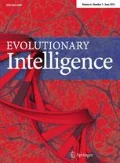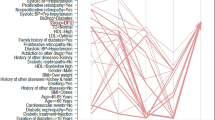Abstract
Efficient and user friendly database technologies have enabled the digitization of information pertaining to the medical domain. This has not only eased the smooth record manipulation but also attracted man a researchers to explore certain challenges to solve through implementation of data mining tools and techniques. Among the nature of ailments, the information related to diabetes mellitus (DM) are found to be the maximally digitized. This has provided a challenging but buzzing platform for the researchers to do in-depth analysis and present modern edge solutions which can lead to early diagnosis of the fatal ailment. There arise numerous side-effects to a human body when it is affected by DM. These multiple ailments attack a human body with the direct or indirect influence of DM and it’s corresponding drug intake. Thus, there has been a demand for a generic scheme which can predict the likeliness of certain multiple ailments that a DM patient is supposed to be attacked by in near future. In this work, a suitable scheme has been proposed in the same direction. This scheme provides a viable platform where the probabilities of multiple ailments for a DM patient can be computed. The proposed scheme also provides the probabilities of occurrence of individual ailment as well as the probabilities of occurrence of certain combination of the ailments. Occurrence of three of the major ailment are being computed in this work. These are retinal disorder, kidney malfunction, and heart disease. A Fuzzy logic strategy has been used for matching several disease constraints and produce a decisive outcome. Certain number of novel heuristic functions are presented which take these outputs and provide a probabilistically accurate prediction of occurrences of the said ailments. Suitable experimental evaluation have been made with proper data inputs. The proposed scheme has also been compared with competent schemes. An overall rates of accuracy of 97% is calculated based on a k-fold cross validation performance metric.



Similar content being viewed by others
References
Nilashi M, Bin Ibrahim O, Ahmadi H, Shahmoradi L (2017) An analytical method for diseases prediction using machine learning techniques. Comput Chem Eng 106:212–223
Weng C-H, Huang TC-K, Han R-P (2016) Disease prediction with different types of neural network classifiers. Telemat Inform 33(2):277–292
Kanchan BD, Kishor MM (2016) Study of machine learning algorithms for special disease prediction using principal of component analysis. In: 2016 international conference on global trends in signal processing, information computing and communication (ICGTSPICC), pp 5–10
Chen M, Hao Y, Hwang K, Wang L, Wang L (2017) Disease prediction by machine learning over big data from healthcare communities. IEEE Access 5:8869–8879
Singh YK, Sinha N, Singh SK (2017) Heart disease prediction system using random forest. In: Singh M, Gupta P, Tyagi V, Sharma A, Ören T, Grosky W (eds) Advances in computing and data sciences. Springer, Singapore, pp 613–623
Kaundal R, Kapoor AS, Raghava GP (2006) Machine learning techniques in disease forecasting: a case study on rice blast prediction. BMC Bioinform 7(1):485
Franklin SW, Rajan SE (2014) Diagnosis of diabetic retinopathy by employing image processing technique to detect exudates in retinal images. IET Image Process 8:601–609
[Online]. Available: www.it.lut.fi/project/imageret/diaretdb1/
Zhou L, Zhao Y, Yang J, Yu Q, Xu X (2018) Deep multiple instance learning for automatic detection of diabetic retinopathy in retinal images. IET Image Process 12:563–571
Krizhevsky A, Sutskever I, Hinton GE (2012) Imagenet classification with deep convolutional neural networks. Adv Neural Inform Process Syst 25:1097–1105
Sisodia D, Sisodia DS (2018) Prediction of diabetes using classification algorithms. Procedia Computer Science, international conference on computational intelligence and data science, vol 132, pp 1578–1585
Sneha GTN (2019) Analysis of diabetes mellitus for early prediction using optimal features selection, Journal of Big Data, international Conference on Computational Intelligence and Data Science, vol 13
Sumathi A, Abiraami TT (2018) Prediction of heart disease complication for diabetic patient using data mining techniques. Int J Pure Appl Math 12:13869–13879
Sandham W, Lehmann E, Hamilton D, Sandilands M (2008) Simulating and predicting blood glucose levels for improved diabetes healthcare. In: IET conference proceedings, pp 121–121(1)
Gadekallu TR, Gao X-Z (2018) An efficient attribute reduction and fuzzy logic classifier for heart disease and diabetes prediction. Recent Pat Comput Sci 11:1–8
Julie L, Hu FB, Curhan GC (2010) Associations of diet with albuminuria and kidney function decline. Clin J Am Soc Nephrol 05(05):836–843
Coresh J, Elizabeth S, Stevens LA, Jane M, Kusek JW, Paul E, Van Frederick L, Levey AS (2007) Prevalence of chronic kidney disease in the united states. JAMA 298(17):2038–2047
Wei Z (1990) Parallel distributed processing model with local space-invariant interconnections and its optical architecture. Appl Opt 29(32):4790–4797
Kunihiko F (1980) Neocognitron: a self-organizing neural network model for a mechanism of pattern recognition unaffected by shift in position. Biol Cybern 36(04):193–202
Sumathi A, Abiraami TT (2018) Prediction of heart disease complication for diabetic patient using data mining techniques. Int J Pure Appl Math 119:13869–13879
Kotsiantis S (2007) Supervised machine learning: a review of classification techniques. Informatica 31:249–268
[Online]. Available: http://www.nhlbi.nih.gov/
Kalaiselvi C, Nasira GM (2015) Prediction of heart diseases and cancer in diabetic patients using data mining techniques. Indian J Sci Technol 8(14):1–3
Kennedy J, Eberhart RC, Shi Y (2001) Chapter seven–The particle swarm. In: Kennedy J, Eberhart RC, Shi Y (eds) the morgan kaufmann series in artificial intelligence, Swarm Intelligence, Morgan Kaufmann, pp 287–325, ISBN 9781558605954.
Jang JS (1993) ANFIS: adaptive-network-based fuzzy inference system. IEEE Trans Syst Man Cybern 23(3):665–685
Parent Morin AM, Lavigne P (1992) Propagation of super-Gaussian field distributions. Opt Quantum Electron 24(9):S1071–S1079
Guo H (2011) A simple algorithm for fitting a gaussian function. IEEE Signal Process Mag 28(9):134–137
Hagen N, Kupinski M, Dereniak EL (2007) Gaussian profile estimation in one dimension. Appl Opt 46:5374–5383
Khan SA, Seemakurthi D, Jabbar DA (2018) Co-disease prediction using multileyer perceptron and classification from diabetic medical data sets. Int J Pure Appl Math 4(6):1–3
Author information
Authors and Affiliations
Corresponding author
Additional information
Publisher's Note
Springer Nature remains neutral with regard to jurisdictional claims in published maps and institutional affiliations.
Rights and permissions
About this article
Cite this article
Reddy, S.S., Sethi, N. & Rajender, R. Mining of multiple ailments correlated to diabetes mellitus. Evol. Intel. 14, 733–740 (2021). https://doi.org/10.1007/s12065-020-00432-6
Received:
Revised:
Accepted:
Published:
Issue Date:
DOI: https://doi.org/10.1007/s12065-020-00432-6




